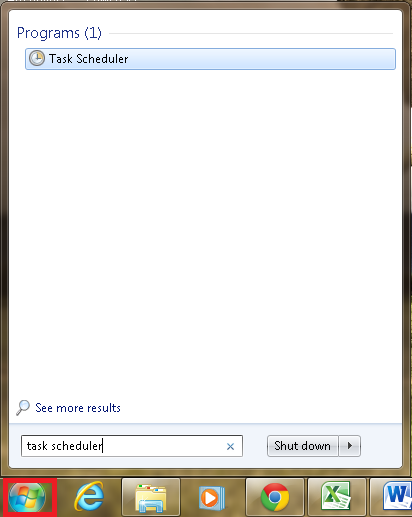

But I use the Run dialog box to see if I have my command working properly. The hardest parameters to figure out are Execute and Argument. The Start in box translates to the –WorkingDirectory parameter of the cmdlet. For me, this is everything I want to pass to the PowerShell.exe command. The Add arguments box translates to the –Argument parameter. For me, that generally translates to PowerShell.exe. In the New-ScheduledTaskAction cmdlet, this is the –Execute parameter, and I specify the name of the program I want to run. The action that I want is to start a program. Here is the form for creating a new scheduled task action: The graphical form can provide some clues. Not only is this a requirement, but it can also be really frustrating. What do I want the scheduled task to do? Without specifying an action, there is no reason to create a scheduled task. There are a few things that are required when it comes to creating a schedule task.
Windows 7 scheduling tasks windows 8#
Note The Scheduled Task module first appeared with Windows PowerShell 3.0 in Windows 8 and Windows Server 2012. Luckily, with Windows PowerShell, it is much easier. Mistakes like that mean you cannot really bill the customer for it, which becomes a double whammy-the lost time and the lost billing.
Windows 7 scheduling tasks code#
Often, my code was simply missing a comma, a quotation mark, or a space. When I was consulting, I hated creating scheduled tasks because if I messed up, I had to drive across town to try to troubleshoot the thing. And when I am done creating a scheduled task, I am not really sure what it is going to do until it runs (or does not run) at the next scheduled time. Not only that, it is easy to make a mistake. Snow in the deep south is about as rare as-well…as rare as people who enjoy manually creating scheduled tasks.ĭude, creating scheduled tasks is boring. At least then there would be an excuse for the dreariness. Today, it is cold, wet, and rainy-not exactly my favorite combination. Microsoft Scripting Guy, Ed Wilson, is here.

Summary : Microsoft Scripting Guy, Ed Wilson, talks about using Windows PowerShell to create a scheduled task.


 0 kommentar(er)
0 kommentar(er)
